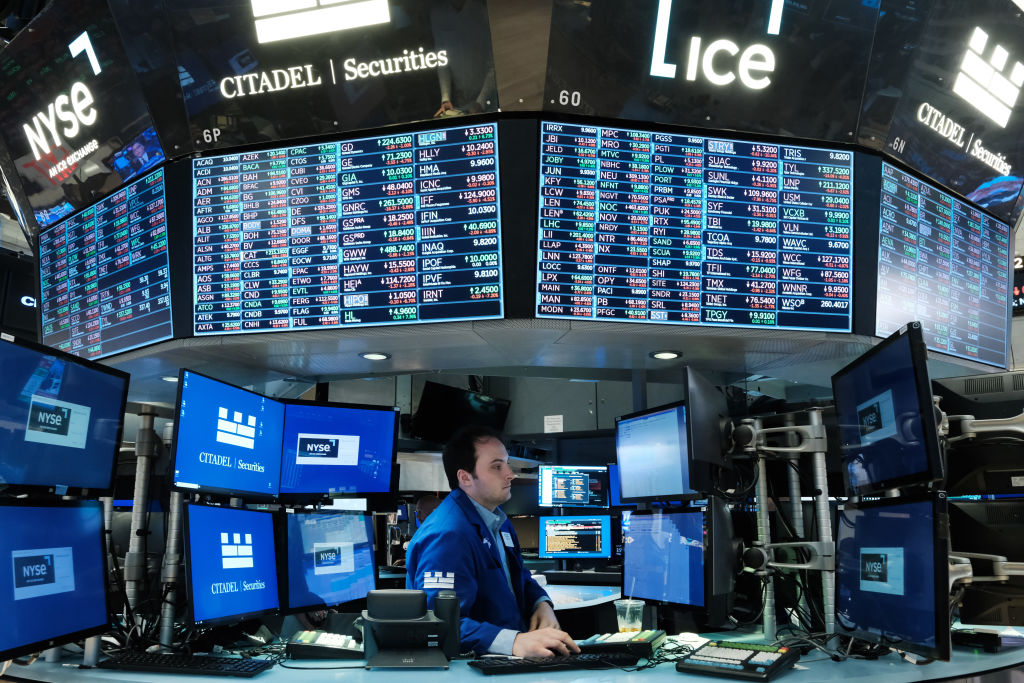Bitcoin fell on Tuesday morning in Asia to hover above US$25,000 after briefly losing the key support level for the first time in the past almost three months. Ether also slid to lose control of the US$1,600 support level. All other top 10 non-stablecoin cryptocurrencies also booked losses, with XRP leading the losers with a 24-hour drop of more than 5%. The drop came ahead of a potential FTX liquidation that could see the collapsed crypto exchange sell its US$3.4 billion worth of crypto assets by the end of the year. U.S. stock futures edged lower, after Wall Street logged daily gains on Monday, as investors await key U.S. inflation data this week.
Bitcoin briefly falls below US$25,000
Bitcoin dropped 2.72% in the last 24 hours to US$25,115.32 as of 07:30 a.m. in Hong Kong, down 2.57% for the week, according to CoinMarketCap data. The world’s largest cryptocurrency dipped to its lowest price since June 15, touching US$24,930.30 on Tuesday morning.
Ether saw a bigger loss, dropping 4.31% to US$1,547.18 and lost 4.79% in past week, reaching US$1,533.43 on Tuesday, its lowest in six months.
All other top 10 non-stablecoin cryptocurrencies posted losses in the past 24 hours. XRP led the losers, falling 5.17% to US$0.4727 for a weekly loss of 6.92%.
“The continued decline in altcoin values seems to be linked to the looming approval of FTX’s asset liquidation, a move that could impact the market values of many top cryptocurrencies including XRP, which FTX holds a substantial amount,” said John Stefanidis, chief executive officer of blockchain infrastructure foundation Balthazar DAO.
FTX crypto exchange, which went into bankruptcy in November 2022, is likely to receive court approval on Wednesday to liquidate an estimated crypto holding of US$3.4 billion. The firm proposed to sell up to US$100 million in crypto assets per week, which could be extended to US$200 million.
The incoming FTX liquidation indicates the crypto market could “see another US$3.4 billion in crypto-to-fiat off-ramping — a potential liquidity gap that might be hard to fill in the absence of Signature Bank, Silicon Valley Bank, and Silvergate Bank, which were responsible for at least, 50% of all the fiat-to-crypto on-ramping during the last few years,” Markus Thielen, head of research and strategy at digital asset service platform Matrixport, said in an emailed report.
The event could hit altcoins extra hard, said Thielen, due to “unfavourable tokenomics that compel early investors in projects (founders, Venture Capital investors, etc.) to make prudent financial and survival decisions, and liquidate positions.”
Meanwhile, digital asset investment products saw an outflow of US$59 million in the week ending Sept. 8, marking the fourth consecutive month in a run of outflows that totaled US$294 million, according to a Monday report by European alternative asset manager CoinShares.
Coinshares also highlighted net inflows in short investment products, suggesting “sentiment remains poor for the asset class,” and attributed the grim mood to “continued worries over regulation of the asset class and recent dollar strength.”
The total crypto market capitalization dropped 2.88% in the past 24 hours to US$1.01 trillion as trading volume surged 60.28% to US$32.35 billion.
U.S. stock futures flat ahead of CPI release

U.S. stock futures edged lower as of 09:10 a.m. in Hong Kong. All three major U.S. indexes logged gains in regular trading Monday, with Nasdaq leading with a 1.14% increase.
The main stock indexes in Asia were mixed as of 09:30 a.m. in Hong Kong. China’s Shanghai Composite, Hong Kong’s Hang Sheng and South Korea’s Kospi moved lower, while Japan’s Nikkei 225 edged up.
Tesla spearheaded the stock market rally on Monday after Morgan Stanley upgraded the electric car maker’s stock from “equal-weight” to “overweight”, saying the firm’s Dojo supercomputer could add over US$500 billion to its market value. Tesla’s share price surged over 10% on Monday, followed by other technology giants including Amazon (+3.52%) and Microsoft (1.10%).
On the inflation front, the U.S. consumer price index (CPI) for August will be released on Wednesday. Federal Reserve Bank of Cleveland expects the inflation gauge to rise 3.8% year-on-year, up from 3.2% in July.
The inflation gauge will provide further insights into the Federal Reserve’s future monetary policies, which aims to curb the annual inflation rate below 2% and in July raised the interest rates to the range between 5.25% and 5.50% — the highest level in the past 22 years.
“This week is more likely to be a ‘good news is good, bad news is bad’ story,” Chris Larkin, managing director of trading and investing at E*Trade from Morgan Stanley, told Bloomberg on Tuesay. “The market’s ability to rebound in the near term could hinge on this week’s inflation numbers, especially Wednesday’s CPI.”
The CME FedWatch Tool predicts a 93% chance the central bank will maintain the current rate unchanged in September. It gives a 57.6% chance for another pause in November, up from 53.5% on Monday.
(Updates with equity section.)




